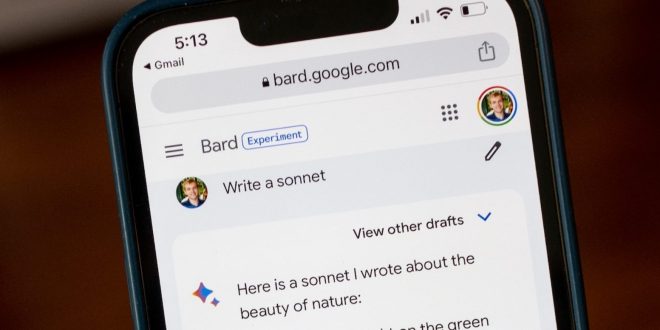After a delay due to data privacy concerns, Google is releasing its ChatGPT rival Bard in more than 40 languages and to the EU today.
Bard received many new features from the internet giant, some of which are only available in English.
Google teased Bard in February in a seemingly rushed response to ChatGPT’s meteoric rise, a super smart search engine/chatbot that uses large language models (LLMs) to generate fresh content from simple prompts. OpenAI, backed by Google rival Microsoft, created ChatGPT.
In March, Bard opened for early access in English in the U.S. and U.K. The waitlist ended in May with a global rollout in 180 countries and Japanese and Korean support. After a privacy regulator raised concerns, Google delayed the EU launch. Google informed the Irish Data Protection Commission (DPC) of its plans to launch Bard in the EU, but it didn’t provide enough information to address the regulator’s data privacy concerns.
Google may have satisfied the DPC with today’s launch.
“We’ve proactively engaged with experts, policymakers and privacy regulators on this expansion,” Bard product lead Jack Krawczyk and VP of engineering Amarnag Subramanya wrote in a blog post.
Google calls its latest update its “biggest expansion to date,” launching worldwide with support for Arabic, Spanish, Chinese, German, and Hindi. Brazil now sells Bard.
Fine-tuning
New features to improve Bard’s responses and chatbot productivity coincide with the expansion. Some were previewed in early May but released today.
Bard’s responses can now be “simple,” “long,” “short,” “professional,” or “casual.” The toggle adjusts Bard’s default prompt responses to match the user’s tone and style, starting in English.
Bard now speaks thanks to text-to-speech AI. Click the new sound icon next to a prompt to hear the chatbot’s responses in over 40 languages.
Bard can now export Python code to Replit, the browser-based integrated development environment, for productivity. Bard will analyze photos with prompts (only in English for now). Users can now pin, rename, and resume Bard conversations. Links make Bard’s responses easier to share.
“Curiosity and imagination drive human creativity,” Krawczyk and Subramanya wrote. “That’s why we created Bard: to help you explore that curiosity, augment your imagination, and ultimately get your ideas off the ground—not just by answering your questions, but by helping you build on them.”
Google’s Bard chatbot initially struggled to match ChatGPT’s response quality. Even Google employees called the chatbot “worse than useless” and a “pathological liar” for its false answers and citations. At Bard’s launch, the stock dropped 8%.
Google says Bard’s math and programming skills are improving. It can explain code, structure data in a table, and surface images in its responses thanks to extensions from Google’s apps and services and third-party partners like Adobe.
Bloomberg reported this week that Bard’s trainers are often underpaid and overworked, another black eye for Google. Some contractors earn $14 per hour, receive little training, and must complete complex Bard audits in minutes.
Bloomberg’s report follows an April Insider report that Bard-testing contractors weren’t given enough time to verify the chatbot’s best answer. That appears unchanged.
 Tech Gadget Central Latest Tech News and Reviews
Tech Gadget Central Latest Tech News and Reviews




